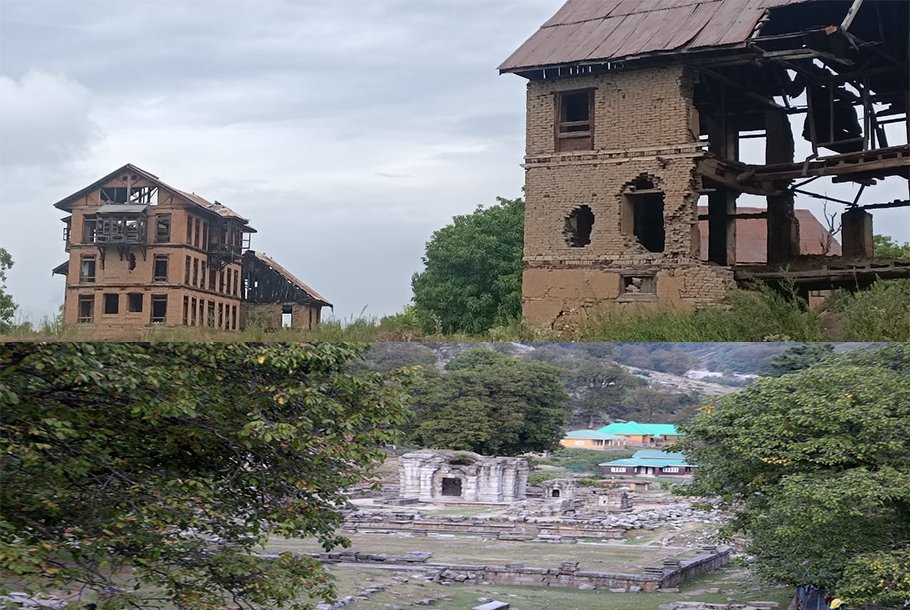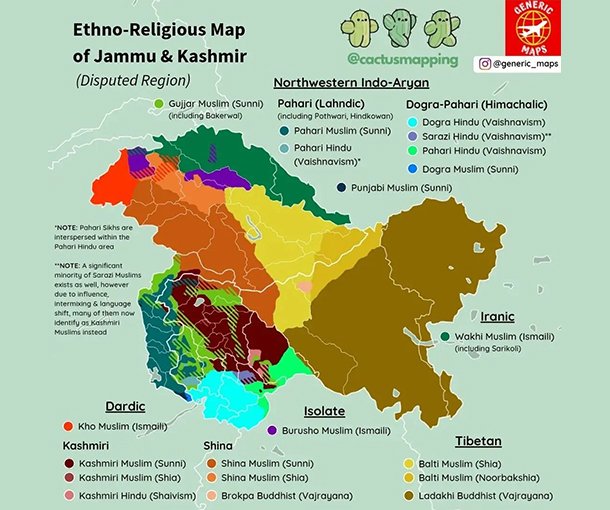
A Journey Through Time and Spirit
Cradled in the lap of the Himalayas, Kashmir is more than a landscape—it is a living chronicle of faith, art, and intellect. Its misty valleys echo with ancient chants, and its rivers carry whispers of sages who once shaped the very essence of Indian spirituality.
Through the lens of history and mythology, Kashmir stands as a luminous thread in the vast tapestry of Indian civilization. The Ramayana recounts its emerald forests where vanaras searched for Mata Sita; the Mahabharata venerates it as a land as sacred as Sindh or Gandhara. Kalhana, the celebrated historian, called Kashmir “the land loved by the gods.” Such reverence in scripture affirms the valley’s place not merely as geography, but as a seat of divine inspiration.
The Birthplace of Spiritual Synthesis
Kashmir has always drawn seekers from across lands and faiths—Hindus, Buddhists, and later, Sufis from Central Asia and Persia—each leaving an indelible mark on its soul. This confluence of ideas, rituals, and philosophies gave rise to Kashmiriyat—a living ethos of tolerance, creativity, and harmony.
At the heart of this spiritual synthesis stands Kashmir Shaivism, one of India’s most profound philosophical traditions. Visionaries like Vasugupta, Utpaladeva, Somananda, Abhinavagupta, and Jayaratha articulated a vision of consciousness that merged metaphysics with aesthetics. For them, divinity was not distant but inherent in every act of perception and creation. Their texts remain timeless, offering a window into India’s inner journey toward self-realization.
Temples such as Martand, Avantipur, and Shankaracharya are not mere relics of stone; they are living vibrations of a civilization that valued light over darkness, knowledge over ignorance. Even today, their ruins stand resilient—echoes of devotion that refused to be silenced.
Waves of Darkness and Resilience
Yet, the valley that once radiated wisdom also endured centuries of devastation. From the 14th century onward, invasions by foreign powers tore through Kashmir’s sacred landscape. Temples were desecrated, manuscripts burned, idols shattered. The Afghan onslaughts sought to extinguish the flame of its indigenous culture.
But light has a way of surviving. The Kashmiri Pandits, torchbearers of this legacy, carried their heritage beyond the valley through waves of exile and migration—six times between the 14th century and 1989. Though uprooted, they became silent ambassadors of Kashmir’s spiritual brilliance across India. Those who remained safeguarded their faith in secrecy, whispering mantras in hidden corners, teaching their children the rituals and stories of their ancestors.
This tenacity preserved a culture where devotion blended with philosophy, where Shankaracharya’s Advaita resonated with Lalleshwari’s mystic poetry and Nund Rishi’s compassionate Sufi wisdom. Together, they forged a shared spiritual grammar—one that transcended sects and languages.
Kashmir: Cradle of Indian Civilization
In truth, Kashmir was never a periphery—it was the pulse of Bharat’s civilization. Its scholars shaped grammar, aesthetics, logic, and metaphysics; its artists sculpted visions of the divine that inspired temples across India. From its universities at Sharada Peeth to its manuscripts that traveled as far as Tibet, Kashmir served as the intellectual fountainhead of ancient India.
The message of Kashmir Shaivism—that the universe itself is a reflection of divine consciousness—remains India’s spiritual DNA. It teaches that enlightenment is not an escape from the world but a deeper embrace of it.

Revival and the Path Ahead
Today, as the world rediscovers the importance of cultural roots and sustainable heritage, Kashmir calls out not just for preservation, but for revival. The revival of its temples, manuscripts, music, and oral traditions is not merely an act of memory—it is an act of national renewal.
Efforts must focus on restoring sacred sites, digitizing ancient texts, and enabling younger generations—both within and outside the valley—to reconnect with their spiritual inheritance. Academic programs, cultural festivals, and research collaborations can breathe life into this continuum.
Just as the river Jhelum flows unbroken despite obstacles, Kashmir’s spirit continues to nourish India’s soul. Its story is not one of loss alone, but of endurance—an unyielding reminder that civilizations may falter but never vanish when sustained by faith and knowledge.
The revival, preservation, and sustainability of Kashmir’s cultural heritage must therefore become a shared national mission. To revive Kashmir is to reconnect India with her civilizational heartbeat.
In the twilight of history, when civilizations are judged not by their power but by their wisdom, Kashmir stands as India’s testament to eternal resilience. Its mountains guard not just borders, but the very memory of enlightenment. To keep that light alive is both our duty and our destiny.

